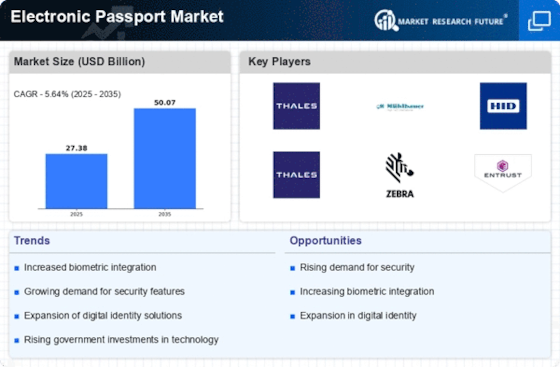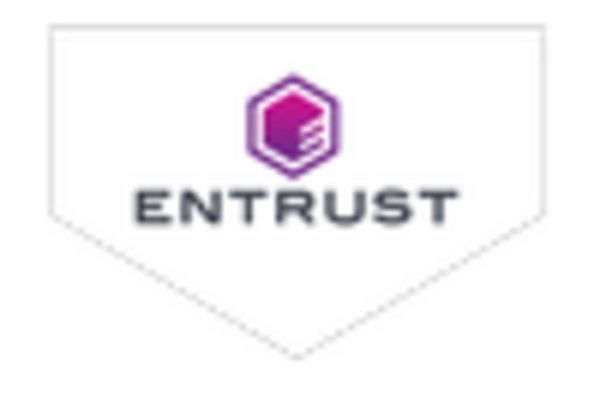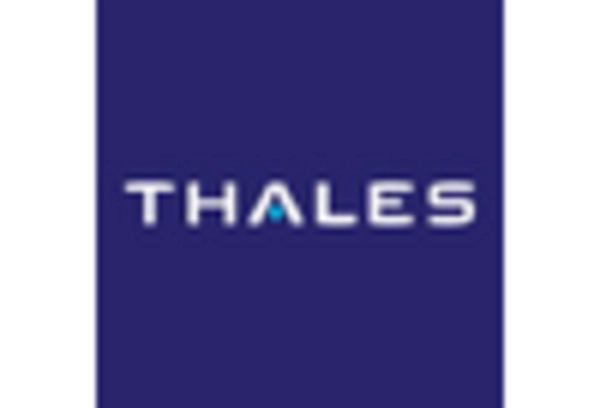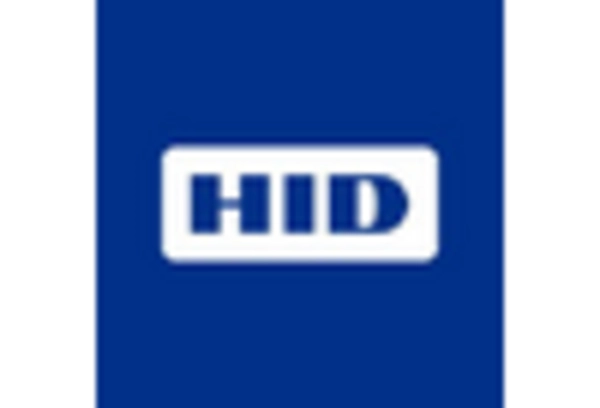Rising International Travel Demand
The Electronic Passport Market is poised for growth due to the rising demand for international travel. As more individuals seek to explore different countries, the need for efficient and secure travel documentation becomes paramount. Recent statistics indicate that international tourist arrivals are projected to reach 1.8 billion by 2030, which will likely drive the demand for electronic passports. These passports facilitate quicker processing at borders, thereby enhancing the travel experience. Furthermore, as nations strive to accommodate this influx of travelers, the Electronic Passport Market is expected to expand significantly. The convenience and security offered by electronic passports align well with the evolving expectations of modern travelers, making them an essential component of international travel.
Integration of Digital Identity Solutions
The integration of digital identity solutions is emerging as a key driver in the Electronic Passport Market. As the world becomes more interconnected, the need for secure and verifiable digital identities is growing. Electronic passports are increasingly being linked with digital identity platforms, allowing for seamless verification processes. This integration can potentially streamline border control procedures and enhance the overall travel experience. Recent studies suggest that the adoption of digital identity solutions could lead to a 25 percent increase in the efficiency of passport processing. As more countries recognize the benefits of this integration, the Electronic Passport Market is expected to evolve, offering innovative solutions that cater to the needs of modern travelers.
Government Initiatives for Enhanced Security
Governments worldwide are increasingly prioritizing security measures in the Electronic Passport Market. Initiatives aimed at enhancing the security of travel documents are being implemented to combat identity theft and fraud. Many countries are adopting electronic passports that incorporate advanced security features, such as encrypted data storage and anti-counterfeiting technologies. For instance, the introduction of e-passports has been linked to a reduction in passport fraud cases by up to 50 percent in some regions. This focus on security not only protects citizens but also fosters trust in the travel system. As governments continue to invest in secure passport technologies, the Electronic Passport Market is likely to benefit from these initiatives, leading to increased adoption rates.
Increased Awareness of Cybersecurity Threats
The Electronic Passport Market is also influenced by the heightened awareness of cybersecurity threats. As digital technologies become more prevalent, concerns regarding data breaches and cyberattacks are on the rise. This awareness is prompting governments and organizations to invest in more secure electronic passport systems. Enhanced encryption methods and secure data transmission protocols are being developed to protect sensitive information stored in electronic passports. According to recent reports, the cybersecurity market is projected to grow by 10 percent annually, which indicates a strong focus on securing electronic travel documents. As the Electronic Passport Market adapts to these challenges, it is likely to see increased investment in security technologies, ensuring the protection of travelers' data.
Technological Advancements in Biometric Systems
The Electronic Passport Market is experiencing a surge in technological advancements, particularly in biometric systems. These innovations enhance the security and efficiency of passport verification processes. Biometric features such as fingerprint recognition and facial recognition are becoming standard in electronic passports, making them more difficult to forge. According to recent data, the integration of biometric technology is expected to increase the adoption rate of electronic passports by approximately 30 percent over the next five years. This trend not only improves the user experience but also strengthens border security, which is a critical concern for many nations. As countries invest in modernizing their passport systems, the Electronic Passport Market is likely to see substantial growth driven by these technological enhancements.
















Leave a Comment